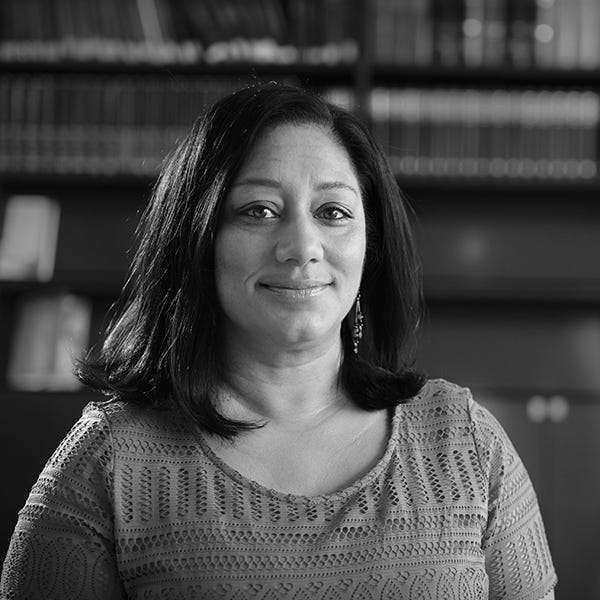2020
Doing well by doing good: My journey to impact investing
Impact Investing has become a part of today’s zeitgeist. What is it?
By Dimple Sahni, CWI Jury Member
Impact Investing has become a part of today’s zeitgeist and is being spoken about within the confines of Davos to classrooms in colleges to Wall Street. What is Impact Investing? According to the industry’s trade association the Global Impact Investing Network (GIIN), Impact Investments are Investments made with the intention to generate positive, measurable social and environmental impact alongside a financial return.
For me, Impact Investing is the culmination of everything I am combined with everything I have done.
As an immigrant from India who moved to the US at the age of 6, I oscillated between two worlds. School years in the US and summer vacations in India reminded me of the stark contrast between the trajectory my life and the lives of my cousins, especially the females. That’s when I decided I would become a change agent to level the playing field for those who were not fortunate enough to grow up in a developed country with progressive social norms.
My journey to impact investing came rather naturally, even before I had the vocabulary and taxonomy around it. I was both a mathlete and an athlete in college and so going into the masculine field of finance was a logical choice. After working at Goldman Sachs as a banker and a trader, I left in 1999, after the IPO and with my shares in tow to become an Edupreneur (“education entrepreneur”). Even without having the term impact investing, my pitch to venture capitalists was “you can do well by doing good”. A sign of things to come?
After selling my company to Accenture, I set out for business school but a serendipitous meeting led to me deferring school for a year to move back to India operating in sustainability space, focusing on water.
Thus when I went to Wharton to pursue my MBA, I wanted to combine my love of finance, social entrepreneurship and emerging markets; impact investing was the clear answer.
DISPELLING THE MYTH
Today, after being armed with a Wharton MBA, a Kauffman Fellowship, and having worked at platforms like the Omidyar Network, and Unilever Corporate Ventures, I am proud to be working at a large European family office committed to making a difference.
At Anthos, we manage the interests and assets of the Brenninkmeijer family. The family has often said it wants to be a business as a force for good through everything it does: their operating businesses, philanthropies and investing businesses.
As the only female Managing Director in the investment department, my role is to deploy money into a multi-asset impact portfolio which includes private markets, public markets and real assets. This total asset allocation model is truly cutting edge and pushes the boundaries on what’s possible.
There is a misconception about whether or not you can have market rate returns within an impact strategy. The answer is yes. To support this answer our family office sponsored research around dispelling this myth and it became a white paper that Wharton Business School published called “Great Expectations”.
Some key findings include that early data suggests aligned exits can demonstrate financial success. Among the sample, concessionary financial returns were not required to preserve the social or environmental effect of impact investments. Market-rate-seeking impact investments in the sample were financially competitive on a gross basis with other equity investing investment opportunities. This financial performance may be why impact fund managers often assert that there is little inherent tension between profits and “purpose.”
REACHING THE MAINSTREAM
Though technically impact investing is still in its infancy, it has a bright future. In the last 5 years there has seen tectonic shifts and it is becoming more and more mainstream. 2015 saw the introduction of the Sustainable Development Goals (SDGs) by the United Nations which provided a common taxonomy to unite against the world’s biggest problems. Every investment bank, every asset management firm now has an impact/responsible/sustainable strategy. This is both client-driven, especially from the next generation of wealth holders, and also government- and regulation-driven with people considering Environmental Social Governance simply a best practice.
To advance the impact investing arena, we need to also mobilize around a common impact measurement framework. The Impact Management Project (IMP) is doing just that. In fact, our family office published its own framework which served as a precursor to the IMP Project. Which was eventually made into a case study called More than Measurement.
In addition, I believe the traditional financial auditing firms need to open departments focused on auditing impact data to bring some standardization and objectivity to impact reporting.
My hope and prediction is that there will be a convergence and that impact investing will just be considered best in class investing because having a global mindset, working towards the social benefit of all people and the planet will not only put you on the right side of history but will ultimately be more profitable.
So what’s my role in the future of impact investing? In addition to mentoring more female and indigenous entrepreneurs to scale their businesses, I’d like to help mentor the next generation of female impact investors.
As for my own career path, building a true multi-asset impact allocation model prepares me to be a Chief Investment Officer for any platform committed to not settling for anything less than true impact integrity.
And one day opening my own family office…

ABOUT THE AUTHOR :
DIMPLE SAHNI
Dimple Sahni is a Venture Capitalist, Entrepreneur, Impact Investor and Family Office Executive who is passionate about leveling the playing field for women entrepreneurs and investors. She is currently an Impact Investing Managing Director at Anthos Asset Management, a 100-year old large single family office dedicated to impact investing across all asset classes. Follow Dimple on LinkedIn and Twitter.